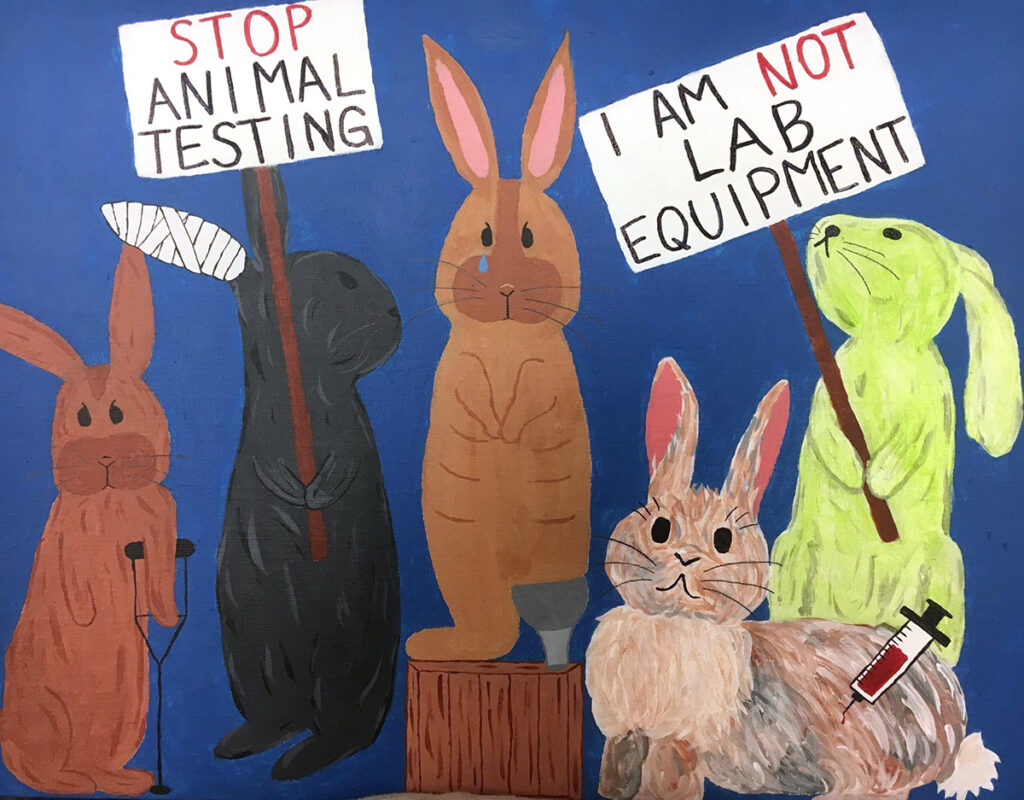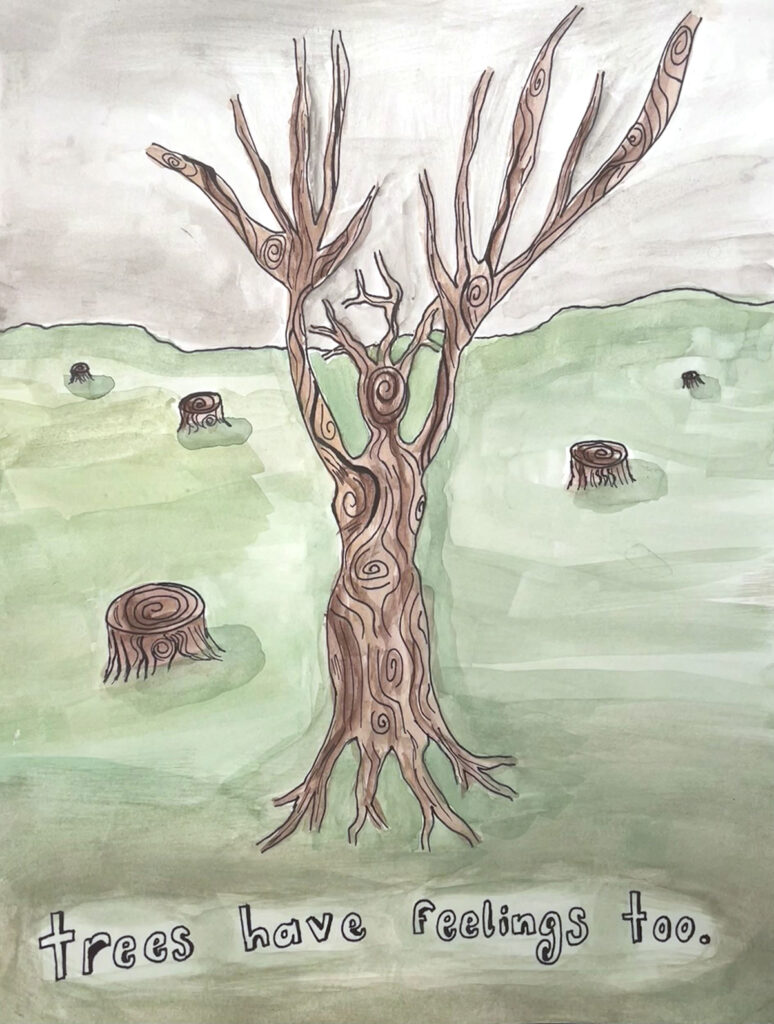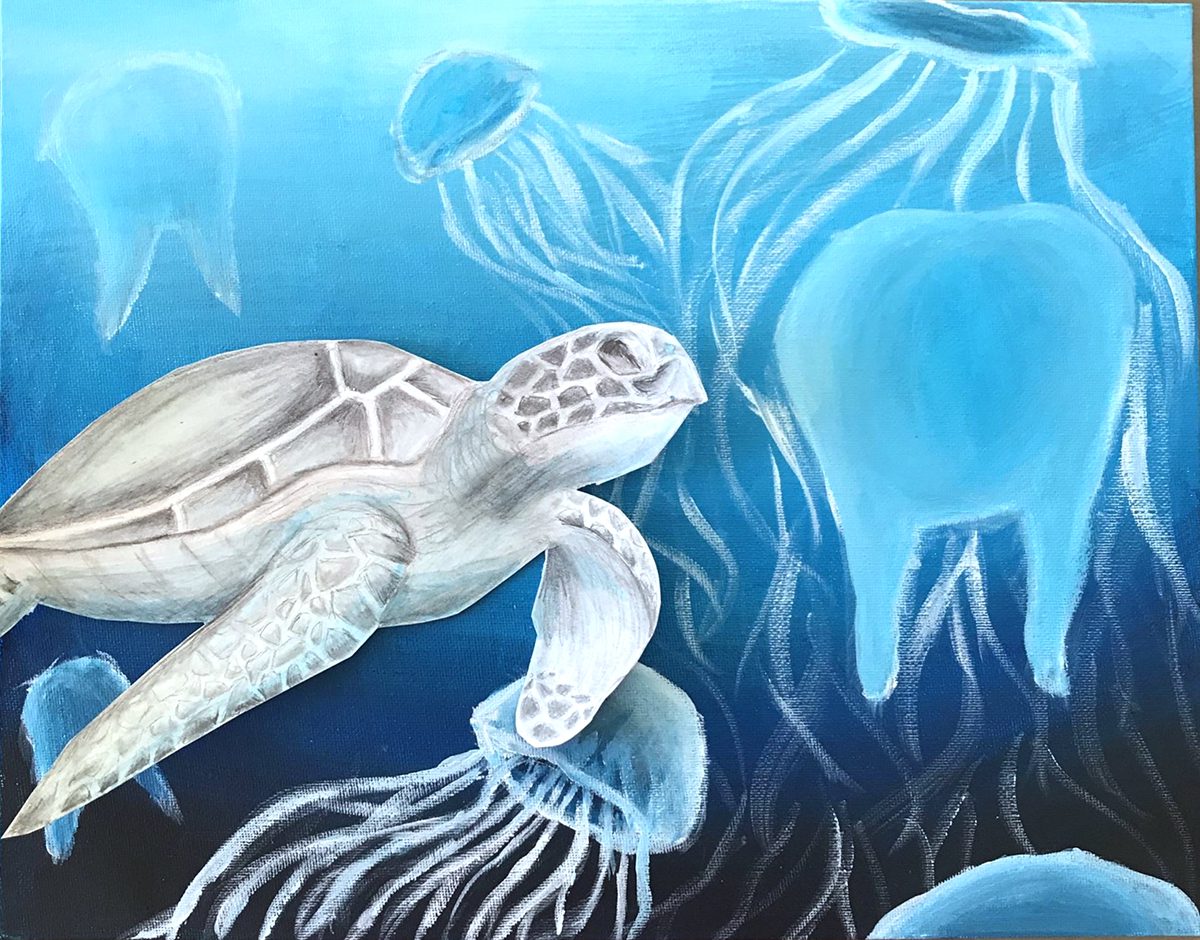Art teachers everywhere are familiar with students who want to give the “right” answer:
- “What do you think I should do?”
- “What will get me the best grade?”
- “I don’t care. Can you tell me what to do?”
The struggle lies in encouraging students to find their voice and become self-sufficient and self-assured. This need to provide the so-called “right” answer may be a symptom of learned helplessness, anxiety, or something else. Whatever the reason, it can significantly affect a student’s ability to actively engage in learning.
This can be particularly clear in the art room. The arts are traditionally a place that embraces “happy accidents” and celebrates mistakes. Having different approaches, voices, and opinions is encouraged in art. Your classroom can be a powerful place for students to express their individuality.
Read on for three strategies to help students find their voice in your art room.

1. Share control of the classroom.
Students, whether they admit it or not, seek approval. They want a good grade or to give the “right” answer. According to Edutopia, when students share the control of their space alongside their teacher, they feel more ownership over their class and what they are learning.
To create this type of space, it is important to allow students to engage at their comfort level. One way to do this is to ask students a question and then have them write their answers down. Once everyone has written something down, ask for volunteers to share out with the class or a table group. By allowing time for students to organize their thoughts ahead of time, you may see those wallflower students begin to participate more. They will be less worried about saying the “wrong” thing, as they have already prepared what they are going to say. You can also collect their writing.
Two more ways you can share control in the art room are to:
- Generate a list of norms students want for the classroom.
Work in small groups to create a collage to represent what these norms may look like. When their collage is complete, ask the group to present the three most important norms and explain how they visually represented them. Students hang the collages up in the room. - Organize student-curated art exhibitions.
This can be in the classroom or somewhere else on campus. For younger students, you can allow them to pick a theme for a rotating bulletin board outside your classroom. For older students, they can organize and curate a two-week exhibition in the library.
To further encourage students to participate, offer silly consequences for not participating. For example, each class has its own Spotify playlist that students add to weekly. I circulate the room during studio time and talk to students one-on-one about what song they would like me to add for them. If a student decides not to choose a song, I tell them I will add one from my favorite genre, which is country and western. I have found this usually prompts students to offer up a suggestion they personally want to hear.
Remember, sharing ownership of the class does not mean students have the final say on everything. You still have standards to meet and a classroom to manage. Reiterate that it’s important to be respectful of differing opinions. Be ready to intervene and guide students on how to interact respectfully during a disagreement. If you need some guidance on how to facilitate student disagreements, check out these resources from Edutopia and WeAreTeachers.

2. Require students to make choices.
Students thrive with structure. The CDC explains that structure and parameters provide consistency and familiarity. As an art teacher, this is right in your wheelhouse. When designing projects and challenges for your students, provide plenty of open-ended decisions with constraints.
For example, instead of simply assigning a pen-and-ink assignment, require students to use three of the six inking techniques from your demonstration. Maybe students have to use clay to make an animal sculpture, but they get to decide what animal they create. The parameters give a starting place for students who may be nervous about taking full ownership. The required choices, in turn, have students make their own decisions and stand by them. It also can boost student creativity, making it a win all around!
If students are still struggling to engage, create a list of possible choices for that project. Ask your reluctant participants to choose from your list. If the student states they don’t like any of the options given, this is a great opportunity to relationship build with them! Their reluctance may mean they really do have an opinion but may not want to share it right away. Sit with them and ask why they aren’t interested. Bring in a personal interest and direct them to do some research around other artists who have investigated the same topic. And, if all else fails, break out your trusty twenty-sided die and have the student roll it. Whatever number they roll is the option on the list they will use.

3. Foster critical thinking by answering questions with more questions.
No matter how engaged or independent your students are, they will always have questions. Rather than giving students a quick answer, empower them to continue making their own choices. If a student asks a question about content or instructions, don’t answer alone. Instead, direct their question to their tablemates. Don’t forget to participate in the discussion that follows. You will be able to bring in knowledge and experience students may not already have. You can also facilitate a back-and-forth discussion between your students.
If students have a more conceptual question, give them multiple answers. This might look like the following conversation:
“Ms. Drummond, what do you think I should do for the sky?”
“Well, you can keep it simple and just use one inking technique. Or, you can add clouds for some texture. Oh! Or, you could add a soft watercolor wash to the sky! It all depends on what you want the focal point to be. Which of those do you think fits your vision best?”
Just like the lists in the second strategy above, students are given multiple options to choose from. This can help make the decision-making process more manageable.

While we have seen anxiety levels spike, especially among students, since the start of the COVID-19 pandemic, do not be too quick to blame this fear of being “wrong” on recent developments. Decades of research show this fear goes back way past 2020. Work in ways for students to share and celebrate their individual voices in your art room. Be prepared with the three strategies above to guide them along the way. You will have independent artists in your studio classroom in no time!
How do you foster decision-making and student voice in your classroom?
In what parts of your instruction do you share control with your students? What is one more area you would like to extend it to?
Magazine articles and podcasts are opinions of professional education contributors and do not necessarily represent the position of the Art of Education University (AOEU) or its academic offerings. Contributors use terms in the way they are most often talked about in the scope of their educational experiences.





